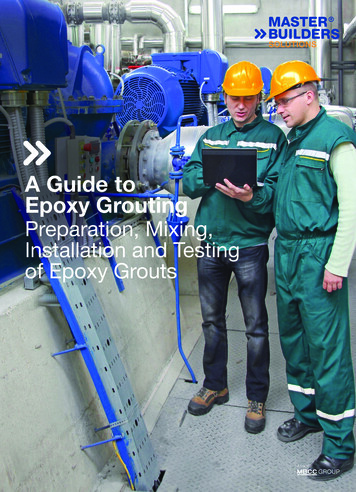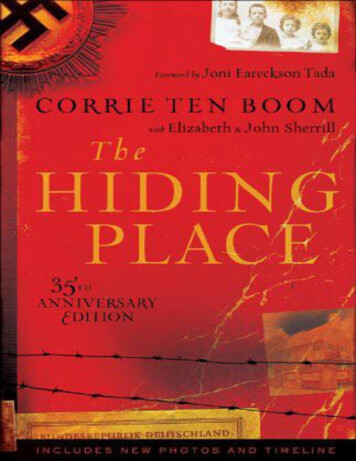
Transcription
([SORULQJ WKH (DUWK·V 0DJQHWLF )LHOG Q ,0 *( 6DWHOOLWH *XLGH WR WKH 0DJQHWRVSKHUHAn IMAGE Satellite Guide to Exploring the Earth’s Magnetic Field1
FNQRZOHGJPHQWVDr. James BurchIMAGE PrincipalInvestigatorDr. William TaylorIMAGE Education and Public OutreachRaytheon ITS and NASA Goddard SFCDr. Sten OdenwaldIMAGE Education and Public OutreachRaytheon ITS and NASA Goddard SFCMs. Annie DiMarcoThis resource was developed bythe NASA Imager forMagnetopause-to-Auroral GlobalExploration (IMAGE)Greenwood Elementary SchoolBrookville, MarylandMs. Susan HigleyInformation about the IMAGEMission is available at:Cherry Hill Middle SchoolElkton, ce.swri.edu/IMAGEMr. Bill PineChaffey High SchoolOntario, CaliforniaMr. Tom SmithResources for teachers andstudents are available at:http://image.gsfc.nasa.gov/poetryBriggs-Chaney Middle SchoolSilver Spring, MarylandCover Artwork:Image of the Earth’s ring currentobserved by the IMAGE, HENAinstrument.Somerepresentativemagnetic field lines are shown in white.An IMAGE Satellite Guide to Exploring the Earth’s Magnetic Field2
&RQWHQWVChapter 1:,,,,,,,9Chapter 2:99,9,,9,,,,;;;,;,,;,,,;,9;9Chapter 3:;9,;9,,;9,,,;,;;;;;,;;,,;;,,,What is a Magnet?*UDGH *UDGH *UDGH *UDGH 3OD\LQJ :LWK 0DJQHWLVP ([SORULQJ 0DJQHWLF )LHOGV ([SORULQJ WKH (DUWK DV D 0DJQHW (OHFWULFLW\ DQG 0DJQHWLVPInvestigating Earth’s Magnetism*UDGH *UDGH *UDGH *UDGH *UDGH *UDGH *UDGH *UDGH *UDGH *UDGH *UDGH *UDGH 7KH :DQGHULQJ 0DJQHWLF 3ROH3ORWWLQJ 3RLQWV LQ 3RODU &RRUGLQDWHV0HDVXULQJ 'LVWDQFHV RQ WKH 3RODU 0DS:DQGHULQJ 3ROHV LQ WKH /DVW HDUV7KH 0DJQHWRVSKHUH DQG 8V 6LPSOH 0DJQHWRPHWHU %LW RI *HRPHWU\:KDW LV DQ 2VFLOODWLRQ 3HULRG":KDW LV DQ 2VFLOODWLRQ PSOLWXGH"0DWKHPDWLFV RI 6LPSOH 2VFLOODWRUV7KH ,QYHUVH &XEH /DZ IRU 0DJQHWLF )RUFHVMagnetic Storms, Aurora and Space Weather*UDGH *UDGH *UDGH *UDGH *UDGH *UDGH *UDGH *UDGH 0DJQHWLF 6WRUPV )URP WKH *URXQG,QYHVWLJDWLQJ 0DJQHWLF 6WRUPV0DJQHWLF 6WRUPV DQG 6RODU FWLYLW\0DJQHWLF 6WRUPV DQG XURUD5RXQG WKH &ORFN 0RQLWRULQJ RI XURUD7KH (YROXWLRQ RI DQ XURUD LQ 7LPH7KH XURUDO %DWWHU\ DQG (OHFWULFDO &LUFXLW7KH 0DJQHWRSDXVH %RXQGDU\ 'LVWDQFHAn IMAGE Satellite Guide to Exploring the Earth’s Magnetic Field 3
&RRUGLQDWLRQ ZLWK 6FLHQFH 6WDQGDUGV1Inquiry245678XMotionForces391011 X22 yXAstronomyEarthXTechnologyXScienceHuman EndeavorWhat is ting the Earth’s MagnetismMagnetic Storms, Aurora andSpace WeatherThis book was designed to provide teachers with activities that allow studentsto explore topics related to the Sun-Earth Connection.We have provided a full range of activities for the grades 3-12 community sothat teachers may see how the single topic of magnetism can evolve insophistication as the student matures. Teachers are invited to use the activitiesas-is, or to modify them as needed to suit their particular objectives.The units are designed for use in conjunction with your current curriculum asindividual lessons or as a unit. The chart above is designed to assist teachersin integrating the activities contained with existing curricula and NationalScience Standards.Throughout the lessons you will find activities that require the students to makeobservations, and record their findings. Observations can be recorded inscience learning logs, journals or by organization into charts or graphs.An IMAGE Satellite Guide to Exploring the Earth’s Magnetic Field4
,QWURGXFWLRQ"Students should be actively engaged in learning to view the world scientifically. Theyshould be encouraged to ask questions about nature and to seek answer, collect things, countand measure things, make qualitative observations, organize collections and observationsand discuss findings."(American Association for the Advancement of Science; Benchmarks for Science)Scientists and students share an active curiosity about the world. A truescientist maintains that inquisitive quality and continues to question, explore andinvestigate.In developing this book, we have attempted to stimulate an active curiosityabout the Sun-Earth Connection, and specifically how Earth and its magnetic fieldreact to solar influences.The activities in this book combine hands-onexperimentation with the use of satellite data resources on the internet, to providestudents with a well-rounded perspective into basic issues in contemporary SunEarth research."When students observe differences in the way things behave or get different results inrepeated investigations, they should suspect that something differs from trial to trial, and tryto find out what." (AAAS ‘Benchmarks for Science Literacy, 1999)Each lesson focuses upon a particular aspect of studying the Sun and theEarth as a system, and how scientists make the observations. Included in theprocedure sections are questions that will further encourage scientific inquiry.Each lesson begins with a description of the activities in which the students willparticipate, and provides general background information. The objectives sectionshighlight the science process skills the students will develop while completing theactivities. The procedures sections are general, and can be adapted to meet theknowledge and developmental levels of the students.Many lessons have extension activities designed to have the students applythe new knowledge in grade appropriate activities.Although the lessons may be used with only the information provided, weinclude where appropriate the addresses of web pages on the Internet, and on theIMAGE ‘Space Weather’ CDROM, so that further material can be incorporated intothe lesson. For further information, please visit the IMAGE satellite’s Education andPublic Outreach web site at:An IMAGE Satellite Guide to Exploring the Earth’s Magnetic Field5
7KH VFLHQWLILF VWXG\ RI (DUWK·V PDJQHWLF ILHOG LV D FRPSOH[ VXEMHFW WKDW KDV HYROYHGWUHPHQGRXVO\ VLQFH :LOOLDP *LOEHUW·V ERRN ¶'H 0DJQHWH· ZDV SXEOLVKHG LQ 7KH ·V ZHUH D SHULRG RI XQGHUVWDQGLQJ KRZ PDJQHWLF IRUFHV RSHUDWHG LQ JUHDWPDWKHPDWLFDO GHWDLO E\ SK\VLFLVWV VXFK DV 2HUVWHG )DUDGD\ DQG *DXVV FXOPLQDWLQJZLWK WKH HOHFWURPDJQHWLF WKHRU\ E\ -DPHV &OHUN 0D[ZHOO 7KH UHODWLRQVKLS RIODERUDWRU\ PDJQHWV WR WHUUHVWULDO PDJQHWLVP EHFDPH D G\QDPLF VFLHQWLILF GLVFLSOLQHRQFH SK\VLFLVWV UHDOL]HG WKDW DXURUD ZHUH UHODWHG WR GLVWXUEHG PDJQHWLF FRQGLWLRQVD GLVFRYHU\ PDGH E\ OH[DQGHU YRQ XPEROW LQ WKH ·V 'XULQJ WKH WK FHQWXU\ VRSKLVWLFDWHG SK\VLFV PRGHOV ZHUH GHYHORSHG WR H[SODLQ KRZ (DUWK·V PDJQHWLF ILHOGFKDQJHV HVSHFLDOO\ GXH WR VRODU VWRUPV DQG WKH RXWSRXULQJ RI PDWWHU DQGHOHFWURPDJQHWLF HQHUJ\ 6DWHOOLWH REVHUYDWLRQV VLQFH WKH ·V KDYH KHOSHG VFLHQWLVWV H[SORUH WKH GHWDLOHGLQWHUDFWLRQV EHWZHHQ WKH YDULRXV SODVPDV DQG ILHOGV WKDW VXUURXQG (DUWK ZLWKLQ WKHPDJQHWRVSKHUH WKH UHJLRQ RI VSDFH DURXQG (DUWK ZKHUH LWV PDJQHWLF LQIOXHQFHVFRQWURO WKH EHKDYLRU RI FKDUJHG SDUWLFOHV ,Q WKH VW FHQWXU\ VDWHOOLWHV VXFK DVWKH 1 6 ,PDJHU IRU 0DJQHWRVSDXVH WR XURUDO *OREDO ([SORUDWLRQ ,0 *( ZLOOLQYHVWLJDWH WKH GHWDLOHG PRWLRQV RI WKH YDULRXV SDUWLFOHV WKDW IORZ ZLWKLQ LQ WKHPDJQHWRVSKHUH ,Q WKH \HDUV WR FRPH 1 6 ZLOO ODXQFK FRQVWHOODWLRQV RI VDWHOOLWHVWR PDS WKH HQWLUH PDJQHWRVSKHUH RQ D GD\ WR GD\ EDVLV VR WKDW VFLHQWLVWV FDQJUHDWO\ LPSURYH WKHLU DELOLW\ WR IRUHFDVW ZKHQ FRQGLWLRQV PD\ WXUQ KRVWLOH IRU RXUDVWURQDXWV DQG RXU ELOOLRQV RI GROODUV RI VDWHOOLWH UHVRXUFHV )RU PRUH LQIRUPDWLRQ DERXW (DUWK·V PDJQHWLF ILHOG DQG ZK\ VSDFH ZHDWKHU LVVXHVDUH EHFRPLQJ LQFUHDVLQJO\ LPSRUWDQW YLVLW WKH IROORZLQJ ZHE UHVRXUFHV,0 *( (GXFDWLRQ :HE SDJH([SORUDWLRQ RI WKH 0DJQHWRVSKHUH1 6 6XQ (DUWK )RUXP1 6 266 5HVRXUFH 'LUHFWRU\6SDFH :HDWKHU ,OOXVWUDWHG 3ULPHU7RGD\·V 6SDFH :HDWKHU UHFHQW ERRN DERXW KXPDQ LPSDFWVKWWS LPDJH JVIF QDVD JRY SRHWU\KWWS ZZZ LVWS JVIF QDVD JRY (GXFDWLRQ ,QWUR KWPOKWWS VXQHDUWK JVIF QDVD JRYKWWS WHDFKVSDFHVFLHQFH VWVFL HGX KWWS VXQHDUWK JVIF QDVD JRY VHFKWPO WXW KWPOKWWS ZZZ VHF QRDD JRY 6:1KWWS ZZZ WKHDVWURQRP\FDIH QHW An IMAGE Satellite Guide to Exploring the Earth’s Magnetic Field6
OWKRXJK LW LV QRW UHTXLUHG LQ RUGHU WR XVH WKLV WHDFKHU·V JXLGH WKH ,0 *( ¶6SDFH:HDWKHU· &'520 KDV PDQ\ UHVRXUFHV WKDW DUH UHOHYDQW WR WKH DFWLYLWLHV LQ WKLVZRUNERRN HUH LV D VKRUW LQGH[ RI WKH UHVRXUFHV DVVXPLQJ WKDW \RXU FRPSXWHUOLVWHG WKH &'520 GHYLFH DV ¶'ULYH ,·6XSSOHPHQWDU\ DFWLYLW\ ZRUNERRNV IRU . VWXGHQWVILOH , SRHWU\ DFWLYLWLHV KWPO UWLFOHV DERXW WKH ,0 *( PLVVLRQ VSDFH ZHDWKHU DQG KXPDQ LPSDFWVILOH , SRHWU\ UHVRXUFHV KWPO&DVH KLVWRULHV RI VHYHUDO PDMRU VWRUPV LQFOXGLQJ UHSUHVHQWDWLYH GDWDILOH , SRHWU\ WRGD\ ,0 *(6(( KWPO,PDJHV DQG PRYLHV IURP WKH ,0 *( VDWHOOLWHILOH , SRHWU\ PXOWLPHGLD KWPO RZ WR EXLOG D PDJQHWRPHWHU DQG MRLQ ¶0DJ1HW·ILOH , SRHWU\ ZRUNERRN PDJQHW KWPO) 4V DERXW DVWURQRP\ DQG VSDFH SK\VLFVILOH , SRHWU\ DVN DVNPDJ KWPO7KH ODWHVW QHZV IURP ,0 *(ILOH , SRHWU\ QHZV QHZQHZV KWPO6SDFH :HDWKHU 3ULPHUILOH , SRHWU\ WXWRULDO WXW KWPO/LYH GDWD IURP VSDFHILOH , SRHWU\ WRGD\ LQWUR KWPO:KDW LV 6SDFH :HDWKHU"ILOH , SRHWU\ VN\WHO KWP,QWURGXFLQJ WKH ,0 *( VDWHOOLWHILOH , SRHWU\ VZUL LQGH[ KWPOAn IMAGE Satellite Guide to Exploring the Earth’s Magnetic Field7
, 3OD\LQJ ZLWK 0DJQHWLVP,QWURGXFWLRQ2EMHFWLYHVWhat is magnetism? We have all had theexperience of using simple magnets to holdnotes on surfaces such as refrigeratordoors. Magnetism is the force produced bymagnets which does all of the "holding".Magnetism is also a very important force innature which can move hot gases in stars,and in the space around Earth. Thestudents will investigate magnetism andmagnetic forces. The students will explorethe attracting and repelling properties ofmagnets through hands on experiences. Students will identify items that areattracted to magnets. Sudents will experiment with aninvisible force. Students will learn about polarity.H\ 7HUPV0DWHULDOVMagnetsPaper clipsMagnet - a metal that can attract certainother metals.Magnetic Properties - refers to an itemwhich can attract or repel items as amagnet does.StringBooksRulerVarious metal samples to test.Note: Provide enough of the above resources sothat each student has enough to do the activity.Poles - refers to the two areas of amagnet where the magnetic effects arethe strongest. The poles are generallytermed the north and south poles. Polesthat are alike (both north or both south)will repel from each other, while polesthat are different (one north, one south)will attract to each other.An IMAGE Satellite Guide to Exploring the Earth’s Magnetic Field8
3URFHGXUH Give each student a magnet. Have the students explore the metallic samples attractedto the magnet. The students should look at the samples and find commoncharacteristics. Have them fill in the table below and add their own samples. Thestudents should record their findings in a learning log. Tape one end of a piece of string to a desk; tie the other end onto a paper clip. Take asecond piece of string and suspend the magnet from a ruler anchored with books.Adjust the level of books so that the distance between the magnet and the paper clipallows the clip to stand up without touching the magnet. The students should see thata magnetic force could be invisible. You can place pieces of paper or cloth between theclip and the magnet to show the strength of the magnetic force. Can the students findmaterials that block magnetic forces? With the string still attached, have the students try to raise the paper clip from the deskwith a magnet. They should try to accomplish this without letting the magnet and paperclip touch. The students should keep a log of how they were able to accomplish this;what methods and strategies were used. Give each student two magnets. Allow the students time to explore the attracting andrepelling properties of magnets. They should be able to demonstrate that a magnet hastwo ends or poles that will attract or repel from other poles. Have the students observewhat happens when two magnets are repelling from each other. The students shouldfind a partner and discuss what they have seen and whether their classmate was ableto discover the same properties.&RQFOXVLRQVThe students will learn the characteristics of magnetism. The students will demonstrate theattracting and repelling properties of magnets.,7(0 WWUDFWHG WR 0DJQHW1RW WWUDFWHG WR 0DJQHWSDSHU FOLSQLFNHOSHQQ\SDSHU OXPLQXP IRLOAn IMAGE Satellite Guide to Exploring the Earth’s Magnetic Field9
,, ([SORULQJ 0DJQHWLF )LHOGV,QWURGXFWLRQ2EMHFWLYHVWhat are magnetic fields? In physicalscience, a "field of force " is a region orspace in which an object can cause a pushor pull. This field extends infinitely in alldirections but gets weaker as you get fartherfrom the source of the field. Magnetic lines offorce show the strength and direction of thisfield. The students will explore the lines offorce of magnets and compare them to thelines of force on the Sun and Earth.When the students are using the ironfilings to define the magnetic lines offorce, it is important to stress that theprocedure must be done slowly andcarefully to have the best effects. The students will describe themagnetic field lines of amagnet. The students will draw themagnetic field lines betweentwo attracting and two repellingmagnetic poles. The students will describe themagnetic properties of theEarth and the Sun.Safety goggles should be used.0DWHULDOVStrong Magnets- enough for class orsmall groupsPlastic wrapIron filingsPlastic teaspoonPaper or overhead transparencyPlastic trayCompassPhotograph of sunspot/magnetic loopson the sunAlso available through the TRACEsatellite site at http://vestige.lmsal.com/TRACE/An IMAGE Satellite Guide to Exploring the Earth’s Magnetic Field10
3URFHGXUHV**Caution the students that the iron filings should not be eaten or blown into eyes. ** Cover the magnets with plastic wrap to keep the iron filings off them. Place the coveredmagnet in the plastic tray and place the paper on top. The students should carefully usethe spoon to sprinkle a small amount of the iron filings on the paper. The iron filings willstay in a pattern that indicates the lines of force of that magnet. The students shoulddraw their observations in their learning logs. After the students have completed theirobservations, the iron filings can be poured off the paper and the tray back into thecontainer. Give each group of students a pair of covered magnets. Place the covered magnetsabout an inch apart in the plastic tray and place the paper on top. The students shouldcarefully sprinkle a small amount of the iron filings on the paper. The iron filings will stayin a pattern that indicates the lines of force between the magnets. The students shouldlook at the lines of force and determine whether the magnetic poles are alike ordifferent. Have the students record their observations in their learning logs. Have the students repeat the activity of finding lines of force, but this time one of themagnets must be reversed so that its opposite pole is about an inch away from theother magnet. The students should look at the lines of force and determine whether themagnetic poles are alike or different. The students should record their observations intheir learning logs. Display the photograph on page 14, or the TRACE website of magnetic loops on theSun’s surface without informing the students of the source. Question the students aboutwhat they observe in the photograph. The image should resemble the magnetic lines offorce the students saw in the previous activity. The students, as scientists, shouldunderstand that they are seeing magnetic properties on the Sun. How does the patterncompare to the iron filings near a bar magnet? Answer: They should display a definiteNorth and South polarity as well as loops. Scientists have in fact confirmed this usingother observations. Discuss the student’s observations which were noted in their log books. Display a compass to the students. Explain that in the Northern Hemisphere the needleof the compass will point to the magnetic north because it is magnetized. When acompass is held on Earth, the Earth’s magnetic field exerts a force on the needle. Thisshould help the students understand that Earth also has magnetic properties. If the"north" part of a compass is attracted to the magnetic north pole of Earth, what is thepolarity of the Earth's north magnetic pole? Answer - South!&RQFOXVLRQVThe students will gain an understanding of the presence of magnetic fields aroundmagnets, the Sun and Earth. The students will learn that the magnetic poles attractwhen they are different and repel when they are the same.An IMAGE Satellite Guide to Exploring the Earth’s Magnetic Field11
6XQVSRWV DOVR KDYH PDJQHWLF ILHOGV DQG WKH\ ORRN D ORW OLNH WKHNLQG \RX VHH ZLWK D EDU PDJQHW 7KLV YLHZ QRWH WKH HDUWK IRUVFDOH LV SURYLGHG E\ WKH 1 6 75 &( VDWHOOLWH VKRZV PLOOLRQ GHJUHH JDVHV IORZLQJ DORQJ WKH OLQHV RI PDJQHWLVP DQG LOOXPLQDWLQJWKHP An IMAGE Satellite Guide to Exploring the Earth’s Magnetic Field12
,,, 7KH (DUWK DV D 0DJQHW,QWURGXFWLRQWhat is the Earth’s magnetosphere?Scientists call the region surrounding Earthwhere its magnetic field is located, theMagnetosphere. When the solar wind sendsstreams of hot gases (plasma) towards Earth,the magnetosphere deflects most of this gas.Students will use hands-on experiences tolearn about the magnetosphere (the magneticfield surrounding Earth). They will learn howthe solar wind (the stream of electricallyconducting plasma emitted by the Sun)interacts with the magnetosphere. There is awonderful animated graphic available for thisin the Blackout! Video (information availablethrough the IMAGE/POETRY site at http://image.gsfc.nasa.gov/poetry/2EMHFWLYHV The students will use models tolearn how Earth’s magnetic fieldprotects us from solar storms. Students will describe the shapeof the Earth’s magnetic field inspace and learn its correctname.H\ 7HUPVMagnetosphere – magnetic cavitycarved out of the solar wind by virtue ofthe magnetic field surrounding Earth.or at the Windows on the Universe site ets– strong polarity barmagnet (enough for groups ifpossible)Plastic wrap - 3” squareIron filings.1 oz. per studentPlastic salad tray or aluminumtrayStraws - 1 per studentSafety goggles - 1 per studentNote: Teacher may elect toperform the experiment using anoverhead projector if it is deemedthat students blowing iron filingswith a straw presents a significantsafety hazard.An IMAGE Satellite Guide to Exploring the Earth’s Magnetic Field13
3URFHGXUHWhat protects the Earth? Earth has a protective cover called the magnetosphere. It works as skin does on yourbody to keep out harmful things. Students can observe a model of the magnetosphereusing magnets and iron filings. To keep your bar magnet clean, wrap it in plastic wrapwith tape around it, or put contact paper around it. Place a bar magnet under a plasticsalad tray or aluminum tray. Sprinkle some iron filings onto the tray from a distance ofabout 10 inches. Observe the pattern made by the iron filings held in place by theforces between the opposite poles of the magnets. The earth’s magnetosphere can bemodeled by blowing softly through a straw towards the magnetic field lines. Asquishing of the field lines on one side of the model shows how Earth’smagnetosphere looks. Have the students draw the model of Earth’s magnetosphere intheir learning logs.What happens when the solar wind approaches the earth’s magnetosphere? Students can observe the way water flows around a stone as a pattern of the solarwind as it flows around the Earth. Place the bar magnet under a plastic tray or aluminum tray. Place a small buttondirectly above the center of the magnet to model the Earth. Sprinkle the iron filingsalong the edge of one side of the tray covering the magnet. Softly blow the filingstoward the button through a straw. Caution the students to blow carefully so that noiron filings get into eyes or mouth! Depending on the force used in blowing, the filingswill be trapped in the magnetic lines of force. Compare this to the trapping of the solarparticles by Earth’s magnetosphere. Have the students draw the model of the effectsof the solar wind on Earth’s magnetosphere.&RQFOXVLRQVThe students will gain an understanding of Earth’s protective region, called themagnetosphere. The students will gain an understanding of how Earth’smagnetosphere interacts with the charged plasma sent from the sun in solar wind andin solar storm events called Coronal Mass Ejections (CMEs).An IMAGE Satellite Guide to Exploring the Earth’s Magnetic Field14
&XOPLQDWLQJ FWLYLW\ Grades 3-5The students will work as a class or in groups with an adult to write the story of a chargedparticle in the sun as it makes its way to Earth. The story could be written on chart paper ormade into a book with student illustrations. Story events should include, gases coming fromactivity on the Sun's surface, being organized with other particles in the magnetic fields ofthe Sun, and the type of phenomena that took the particle away from the Sun.Grades 6-8The students will work as a class, individually, or in-groups to write a story or rap song abouta charged particle in the plasma of the Sun. Story events should include; coming fromactivity on the Sun's surface, being organized with other particles in the magnetic fields ofthe Sun, the type of phenomenon that took the particle away from the Sun and whatoccurred when the plasma approached Earth's magnetosphere.An IMAGE Satellite Guide to Exploring the Earth’s Magnetic Field15
,9 (OHFWULFLW\ DQG 0DJQHWLVPIntroduction:Moving magnets can induce electric currents, and electric currents can cause magnetism. Basedon this statement, there is obviously a close relationship between electricity and magnetism.Electric current flowing in a wire creates a magnetic field around it. This magnetic force isevidence of the phenomena known as electromagnetism.Purpose:Materials:The following activities (Part 1and Part 2) will show therelationship between electricityand magnetism. They will showhow the changes in Earth'smagnetic field can affect theflow, and sometimes interuptthe flow, of electricity frompower company to consumer.1. Dry cell battery. Use a 6volt lantern battery for bestresults2. Large nail or metal rod(about 10 cm long)3. Two meters of bell wire(insulated)4. Paper clips or small metalwashers5. Galvanometer6. Bar magnetPart 1. How strong are Electromagnets?Procedure:1.Carefully wrap the nail with the insulated wire making 20 loops.Connect the bare ends of the wire to the battery (for short periods oftime only)2.Using a Data Sheet, students record the number of paper clips heldby the magnet and the number of turns of wire used. Determine thenumber of paper clips your magnet is able to hold. Now increase thenumber of loops to 40, and determine how many paper clips yourmagnet can hold.Sample Questions:1.How many paper clips did the magnet hold with 20 loops? Howmany with 40 loops?2.What does this show about the strength of magnetic fields?3.When you disconnect the battery, does the magnet still work?4.Can you describe a relationship between the flow of electricity andTeacher Notes:1. The use of 10 loops vs20 loops will work if yourmetal rod is too short to fit thefull, 40 loops in the secondpart of the activity.2. Remind the students toput the loops close togetherwhen they do their wrapping.3. For best results, a 6-12volt battery is recommended.4. Have students take anaverage of the number ofclips magnets can hold at 20and 40 loops.CAUTIONConnect the battery to thewire for short periods of timeonly. The wire will get hot.Do NOT use a car battery or amotorcycle battery to producea stronger magnetic field.These batteries will explode ifshorted, or cause the wire tospark and melt.An IMAGE Satellite Guide to Exploring the Earth’s Magnetic Field16
Part 2. Making currents flow in a wire by magnetic induction.In the last activity you were able to create a magnet using the flow of electricity through a wire. Thisis called an electromagnet. In this activity you will induce the flow of electricity in a wire using apermanent ‘bar’ magnet. The flow of electricity will be small so you will need to use thegalvanometer to measure the flow.Note: A galvanometer is a piece of common high school laboratory equipment that can be boughtthrough school lab equipment suppliers. It is a meter that measures the current flow in a wire. Theyare also called ‘Am meters’ because they measure current flow in units called Amperes. These canalso be bought at electrical supply stores such as Radio Shack.Using the same wire, make a coil big enough to allow the bar magnet to pass through. Hook the bareends of the wire to the galvanometer. Pass the bar magnet through the coils in a back and forthmotion, slowly then quickly. The movement of the needle on the galvanometer is caused by theinduced flow of electricity.Teacher Notes:1.A stronger bar magnet will yield better results.2.Students may need to vary the number of coils to get good results, they may also need to alter thespeed at which they pass the bar magnet between the wire coils.3. Students should observe that a current will only flow if the magnet is in motion.Questions:1.Does the speed at which you move the magnet through the wire coils have any affect on theneedle’s movement? What happens?2.What do you think would happen if the power company was operating at 'full' capacity( such as during a heat wave or extreme cold spell) and a magnetic storm happened? Magnetic stormscause rapid changes in the magnetic field of Earth near ground level.An IMAGE Satellite Guide to Exploring the Earth’s Magnetic Field17
&KDSWHU ,QYHVWLJDWLQJ WKH (DUWK·V0DJQHWLVPFor hundreds of years, sailors have relied on magnetic compasses to navigate the oceans. Thesesailors knew that Earth’s magnetic north pole was not in the same place as the geographic NorthPole, and they were able to make the necessary corrections to be able to determine where they were(and, more important, how to get home!). In modern times, we have found that the magnetic NorthPole does not even stay in the same place, but moves around a significant amount. Smallcorrections are needed in order to use the magnetic pole for navigation purposes.Earth has a magnetic field that has a shape similar to that of a large bar magnet . To the north is themagnetic north pole, which is really the south pole of Earth’s bar magnet. (It has to be this waysince this pole attracts the north pole of the compass magnet!) The Sun also has a magnetic fieldthat is more complicated than, but similar to, that of Earth. The Sun, through its solar wind, has alarge impact on the shape of Earth’s magnetic field.SouthFigure 1: The magnetic field ofEarth is generated by currentsflowing in the liquid outer coreregion. Like all magnetic fields, ithas a north and south polarity. TheEarth’s field extends over onemillion miles into space in somedirections.Figure 1North PolarityFigure 2: This is the magnetic field of a barmagnet. Notice the symmetry and directionof the field lines. Remember, the magneticNorth Pole is not located in the same placeas the geographic North Pole.Figure 2An IMAGE Satellite Guide to Exploring the Earth’s Magnetic Field18
As the solar wind flows outward from the Sun and encounters Earth’s magnetic field, itpushes the Earth’s field in on the side toward the sun and stretches it out on the side awayfrom the sun. The result is a magnetic field shape that is not symmetric in the same way asthe field of a bar magnet. It is also unlike a magnetic field in a pure vacuum which has aninfinite extent in space. The solar wind confines Earth’s magnetic field to a limited region inspace within the solar system. Severe solar storms, called Coronal Mass Ejections (CME)can produce major distrubances in Earth’s ,magnetic field which last for many days at atime and cause Aurora, as well as occasionally satellite outages and electrical blackouts.The region around Earth where Earth’s magnetic field is located is called themagnetosphere (Figure 3). Outside this region, in the region called the InterplanetaryMagnetic Field (IMF), the solar magnetic field is strongest. The boundary line between themagnetosphere and the IMF is called the magnetopause. The part of the magnetospherethat extends from Earth away from the sun is called the magnetotail.On the Sun side, the magnetosphere extends to a distance of about 10 Earth radii (10 Re )under normal solar conditions. By the way, space scientists use this unit of measurement(1 Re 6378 kilometers) much the same way that astronomers use the light-year orparsec. On the side away from the Sun, the magnetosphere is stretched by the solar windso it extends a great distance. (For comparison, the moon orbits at a distance of about 60Re .)Conditions on the Sun, and the related solar wind, are not constant over time. When thesun is at the active stage of the approximately 11-year solar cycle, solar flares and CoronalMass Ejections are more common. This increased activity can result in large-scaledisturbances of the magnetosphere called magnetic storms. The most common effect of amagnetic storm is an increase in the Aurora Borealis, or Northern Lights. In the SouthernHemisphere, they are called the Aurora Australis or the ‘Southern Lights’.Figure 3Figure 3. Earth’s magnetosphere.The curved lines show the magneticlines of force within this cavity. Notethat they do not extend beyond thedashes curve. Thi
Books Ruler Various metal samples to test. Note: Provide enough of the above resources so that each student has enough to do the activity.H\ 7HUPV Magnet - a metal that can attract certain other metals. Magnetic Properties - refers to an item which can attract or repel items as a magnet does. Poles - refers to the two areas of a
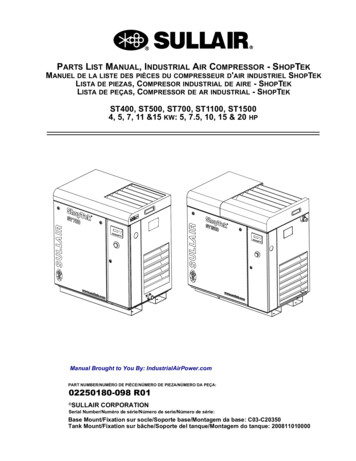


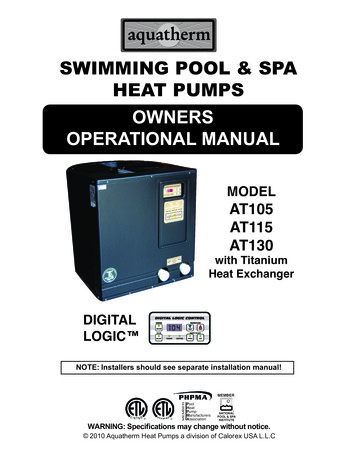
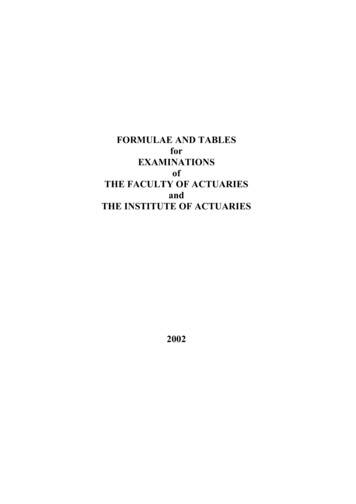
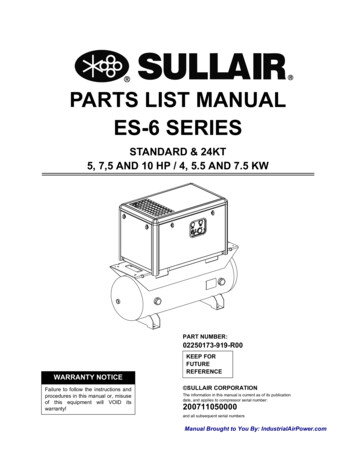
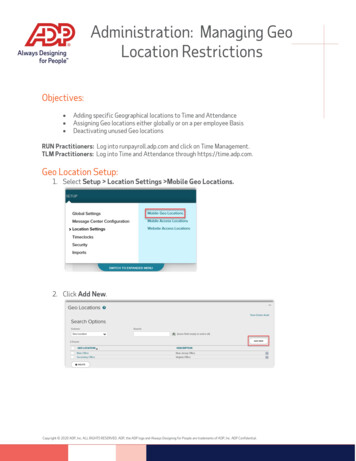
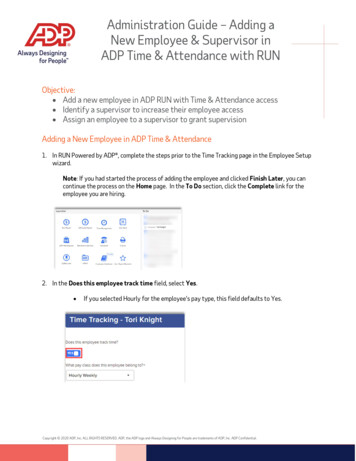
![[ACADEMIC] Mathcad - HW05 - Rensselaer Polytechnic Institute](/img/62/hw05.jpg)
